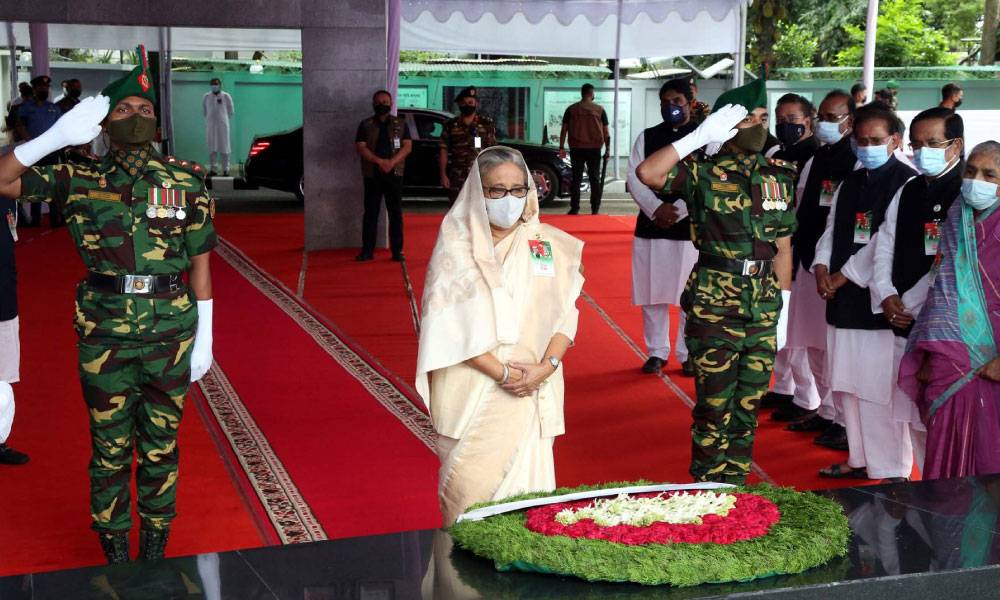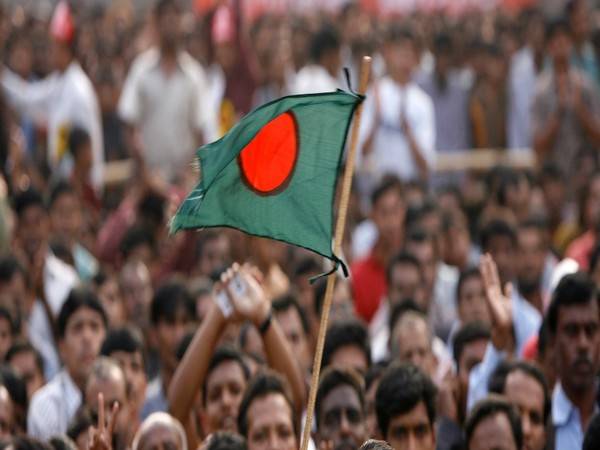Bangladesh has successfully graduated from a low-income country; crossed the final stage for transition to developing countries from the list of least developed countries, writes Priyajit Debsarkar
In the year 2022, Bangladesh has celebrated her 51st Independence Day since it broke away from the idea of the two nation failed theory. The creation of both East and West Pakistan in 1947, started to show cracks as early as in the 1950s when imposition of Urdu language on the maximum majority of Bengali speakers sowed the first seeds of dissent.
Sheikh Mujubir Rahman, later given the title of Bangabandhu (Friend of Bengal) along with the Mukti Bahini fought a gruesome 9 month old bloody battle to create what is today’s Bangladesh. The barbaric murderous regime of the West Pakistani establishment predominantly which was Punjabi in nature had left no stone unturned in order to wipe out the very existence of the Bengali cultural identity. However, they failed miserably as the two nation theory was buried in the bottom of the bay of bengal forever on December 16, 1971.
Under the leadership of Hon’ble Prime Minister Sheikh Hasina, daughter of Bangabandhu, Bangladesh has been passing through an incredible golden era since 2009. Bangladesh has become a confluence of peace, progress, and harmony. The success story on development is being written one after the other. Today, Bangladesh is setting example for other countries to emulate for exemplary development.

In the last 13 years, the average GDP growth has been 6.6 per cent, above 7 per cent in FY2016-2017, FY2017-2018, and FY2018-2019 and exceeded 8 per cent in FY2018-2019. Even during the COVID-19 pandemic, the GDP growth in FY2020-2021 is at a remarkable 6.94 per cent.
The average growth rate achieved during the Sixth Five-Year Plan period was 6.3 percent and that increased to 7.6 per cent during the Seventh Five-Year Plan period. Eighth Five-Year Plan (2021-2025), the Perspective Plan (2021-2041) and the Delta Plan-2100 has already been formulated and their implementation is underway.
The size of GDP has exceeded BD Tk. 39 lakh crore from BD Tk. 4 lakh 72 thousand 338 crore. Per capita income has increased from US$ 543 in FY2005-2006 to US$ 2,824. Inflation is well within 5 to 6 per cent. The poverty rate has declined from 41.5 per cent to 20.5 percent, and the extreme poverty rate has fallen to 10.5 per cent. Foreign exchange reserves touched a record US$ 48 billion (on August 23, 2021) [Now it is around US$40 billion. The size of the budget has increased by eleven times compared to that of FY2005-2006 and the allocation for the social safety net programmes has grown from BD Tk. 2 thousand 505 crore to around BD Tk. 1 lakh crore.
The power generation capacity has increased from 4,900 MW to 25,566 MW. Under the programme, Sheikh Hasina’s initiative – ‘electricity in every house’, 100 per cent of the population of Bangladesh has been brought under the coverage of electricity.
With the final settlement of legal disputes over maritime boundaries with Myanmar and India, Bangladesh has acquired ownership of 1,18,813 square kilometres in its territorial waters, including exclusive economic zones and continental shelves, in the Bay of Bengal. To take advantage of this open right to extract the blue waters of the sea and its resources, the strategy of Blue Economy has been adopted in the Perspective Plan 2041.
Bangladesh has successfully graduated from a low-income country; crossed the final stage for transition to developing countries from the list of least developed countries.

The commitment made in the ‘Vision 2021’ to increase food production, alleviate food shortages and make the country self-sufficient in food production has already been achieved thanks to various effective measures taken by the government.
The dream of Digital Bangladesh has become a reality. With the setting up of Union Digital Centres in 4,550 Union Councils, laying of optical fibres at the bottom of the deep sea. The launching of Bangabandhu satellite in space, the launching of mobile banking activities. The launch of the Bangabandhu-1 satellite has made it easier to provide internet services. About 17 crore mobile phones are currently in use in the country.
The maternity mortality rate has reduced from 348 per lakh live birth in 2005 to 165 currently and the under-five mortality rate has come down from 68 in 2005 to 28 in 2019 per thousand live births. The presence of skilled health workers during childbirth has increased from 15.6 per cent in 2004 to 59 percent in 2019.
Bangladesh has begun implementation of a large number of mega-projects is in the country. The Padma Bridge has been inaugurated and is expected to give a huge boost to the economy.
The Metro Rail, Karnafuli Tunnel, and elevated expressway from Dhaka Airport to Kutubkhali near Jatrabari will be opened soon. Completion of several other major projects, including PayraSeaport, Matarbari Deep Seaport, Rampal Power Station will add a new dimension to the progress of the country.
It is to be noted here that unlike the Sri Lankan debt trap and a corrupt regime which has spiralled the downfall of the country. Bangladesh is on a much secure footing and obviously the post pandemic shock waves will be felt however the country has resilience to absorb and overcome in due course.

Bangladesh is now the 41st largest economy in the world. According to the Centre for Economic and Business Research (CEBR), a British economic research organisation, Bangladesh will become the 25th largest economy in the world by 2035 if economic growth continues.
According to the ERD (entry relationships), the government repaid US$1.91 billion against foreign debts in the 2021 FY. In FY2020, Bangladesh paid $1.73 billion against its MLTs, followed by $1.59 billion in FY2019 and $1.41 billion in FY2018. As of June 2021, Bangladesh’s outstanding foreign loans stood at $50.87 billion, while there is $48 billion more in the pipeline. The ERD data shows that the overall debt repayment would stand at $2.5 in the FY22, $2.7 billion in FY23, $3.28 billion in FY24 and $4.02 billion in FY25.
Bangladesh will have to deal with maximum pressure in FY27, FY28 and FY29 as its debt repayments will reach at least $2.5 billion during the three fiscal years. Such an upward trend will continue till FY33.
The government has succeeded in combating terrorism. In this regard, the government has adopted a zero-tolerance policy. The rate of sabotage in the country has reduced a lot thanks to proper initiatives taken by the law enforcing agencies. The foreign policy introduced by Bangabandhu- “Friendship towards all, malice towards none”- has also been followed by Prime Minister Sheikh Hasina.
Bangladesh is perhaps one of the only shining stars in the region which has endured so much in the past and has limitless potential going forward. Obviously there are deep rooted challenges (some like the global energy crisis due to the Ukraine war). Fracture lines are also present which has to be handled in an appropriate fashion in order to take Bangladesh to the next level in her trajectory of growth, development and prosperity (the golden dream of Bangabandhu).
(Priyajit Debsarkar is an Independent geo political analyst with special interest in the political history of the Indian Subcontinent. Views are personal)

Leave a Reply